fall inside a hole
 |
Bandai Mini Mini Rail chassis
Bandai produced and sold the Mini Mini Rail (ミニミニレール) series of train toys in Japan from 1974 until around 1982. The trains are about the same size as N scale trains and run on rails 10.5mm apart, slightly wider than N scale's 9mm. For the first year, all trains had a simple on-off gearbox, but starting in 1976 most of the range was updated to the reversing Action Series that also added an electrical cutoff switch. In the later 1970s the reversing chassis was redesigned to use a single AA battery instead of two N size batteries. Shown on this page are photos and notes on these different chassis types as well as the D-51 locomotive chassis.
Mini Mini Rail trains and sets are covered on the main Mini Mini Rail page. Rail and accessories are covered on the Mini Mini Rail rail page.
Original Mini Mini Rail chassis (1974)
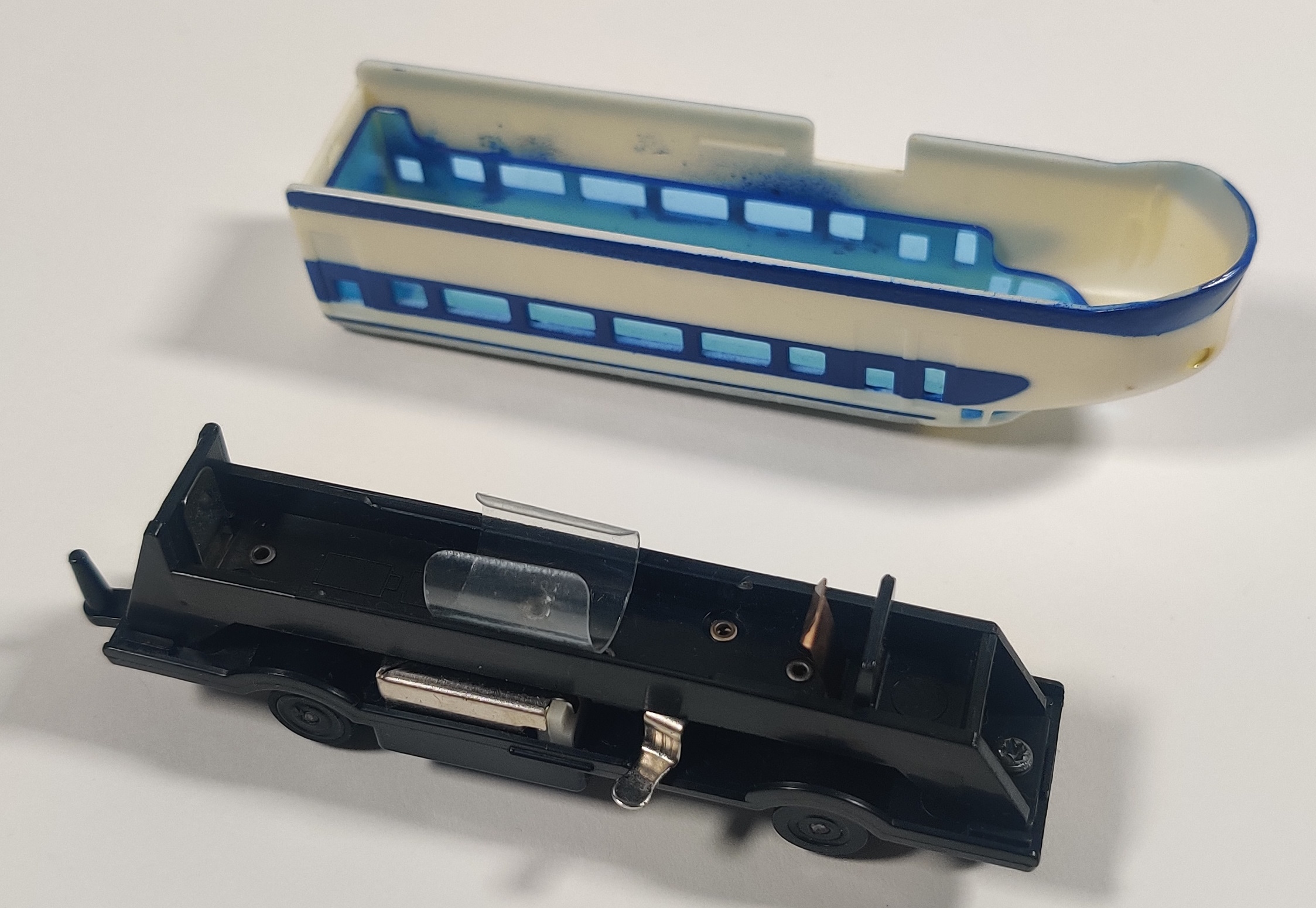
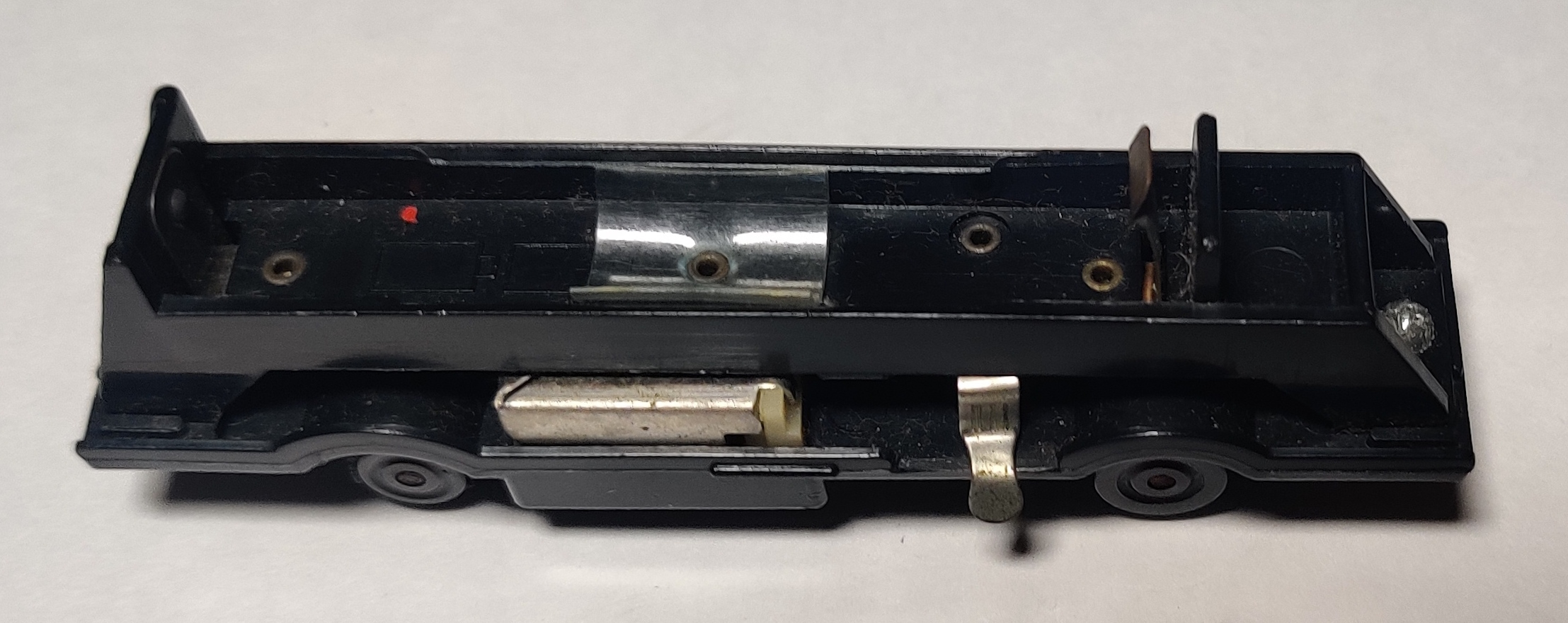
The original Mini Mini Rail motorized chassis was unidirectional and took two N size batteries held in with an often-broken plastic clip. The power switch hung out of the bottom right side of the chassis and train. This chassis was used in the original Hikari and JNR 103 series trains as well as very early EF-65s.
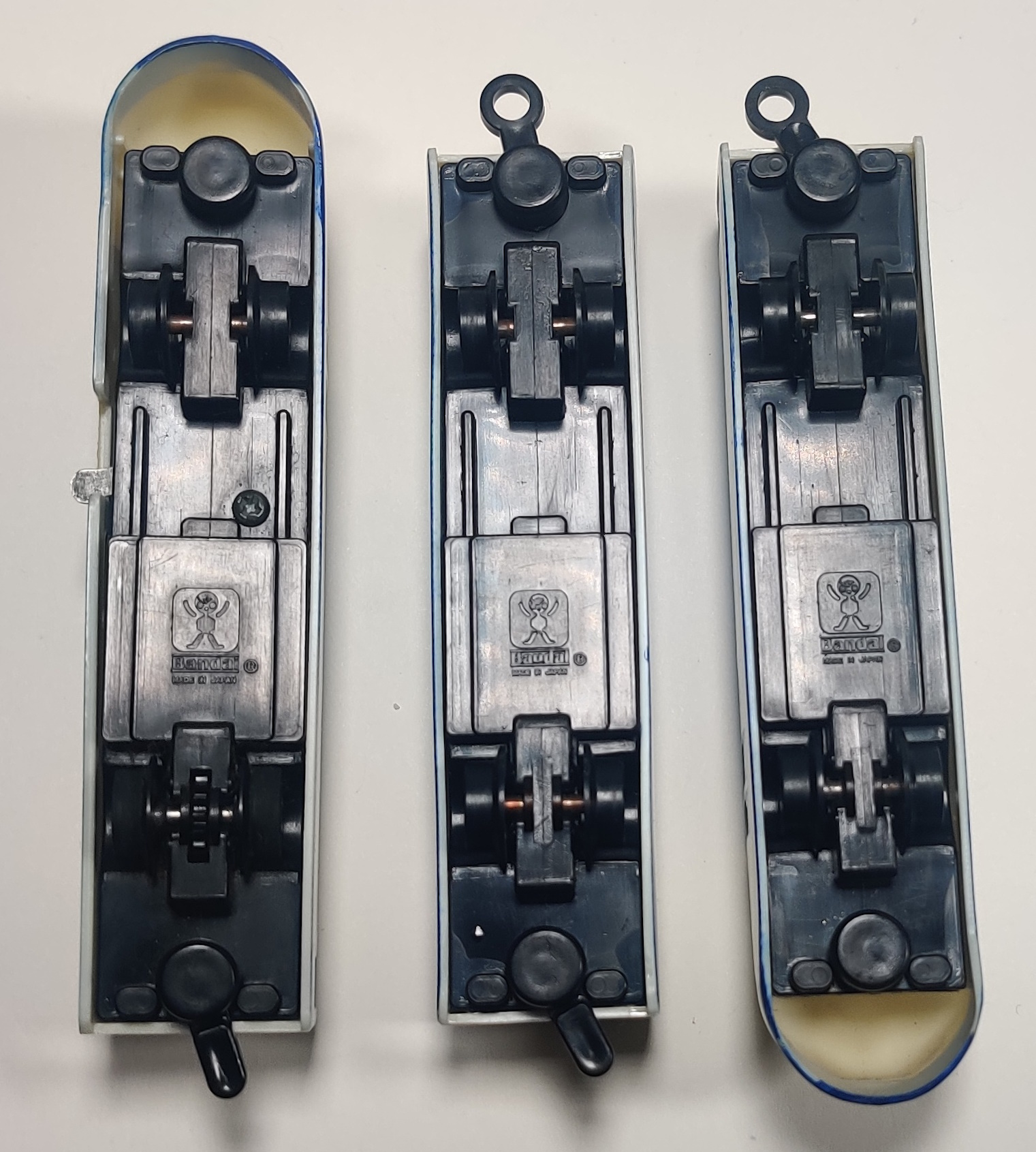
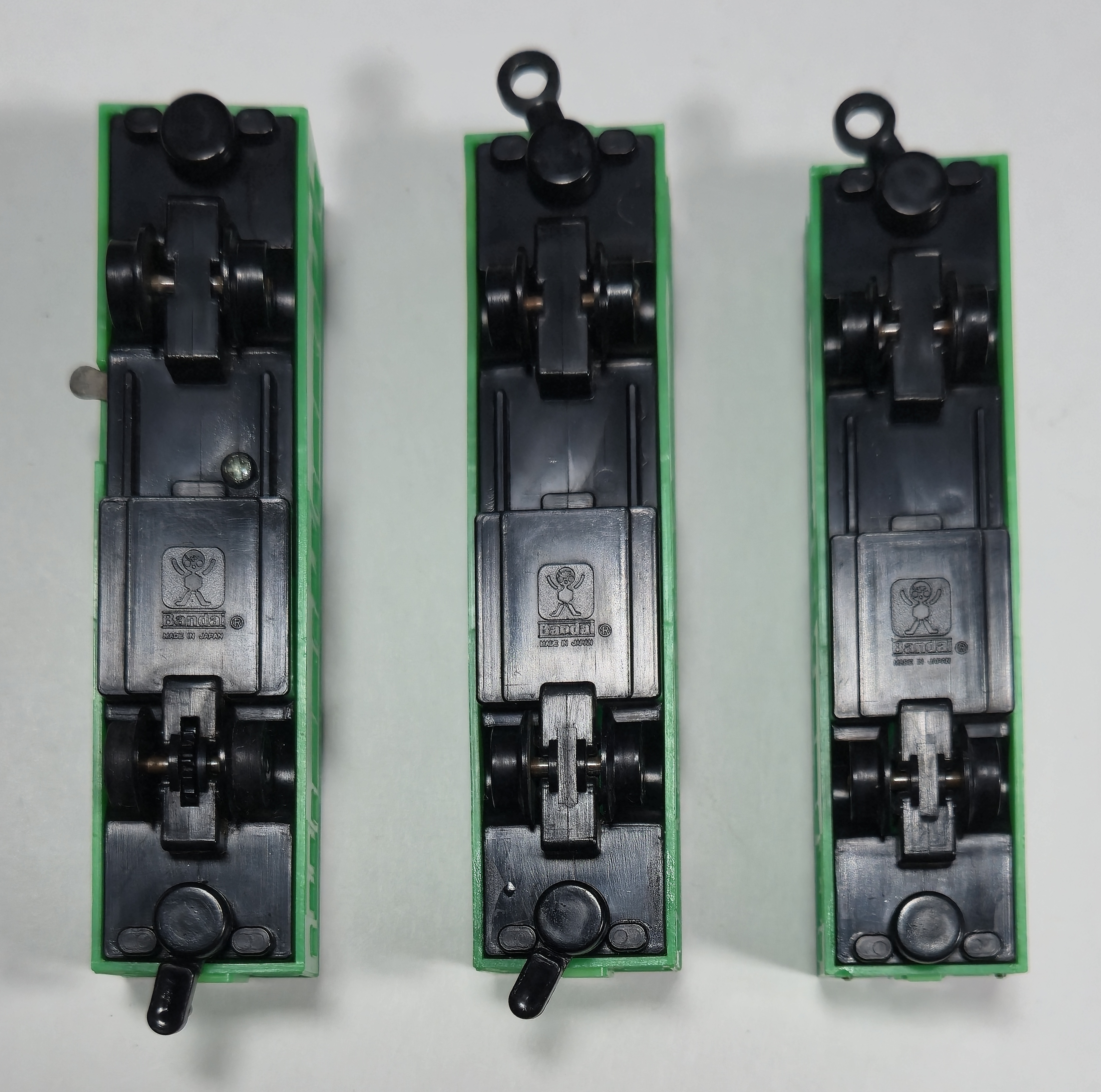
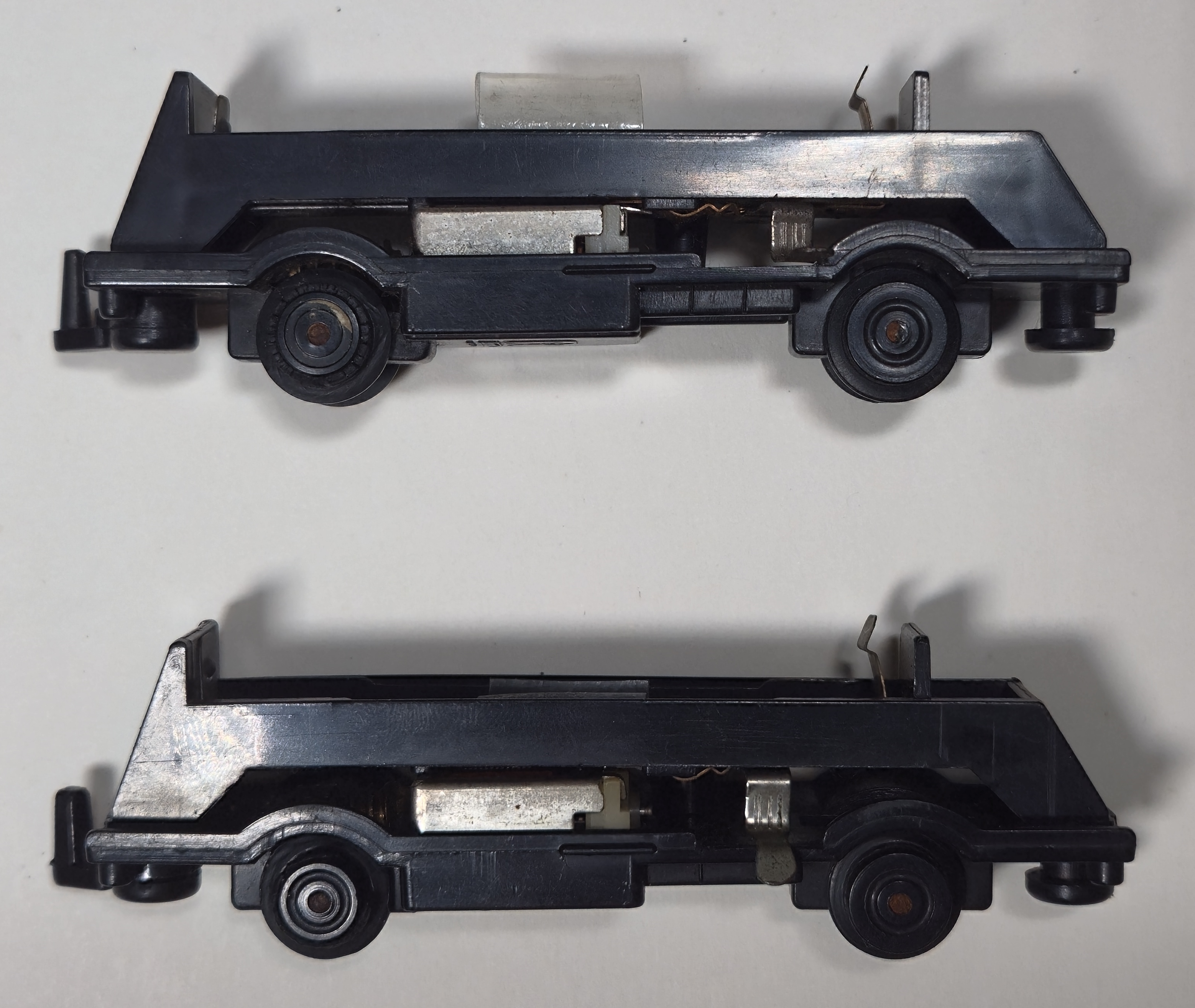
The longer unpowered cars used an unpowered version of the same chassis. There are two very slight variations of this original chassis, the older type with round rear coupling peg and straight-out power switch and a very short-lived style with bent-down power switch and the newer style of square peg coupler was used on late forwards-only EF-65 locomotives (and possibly other trains).
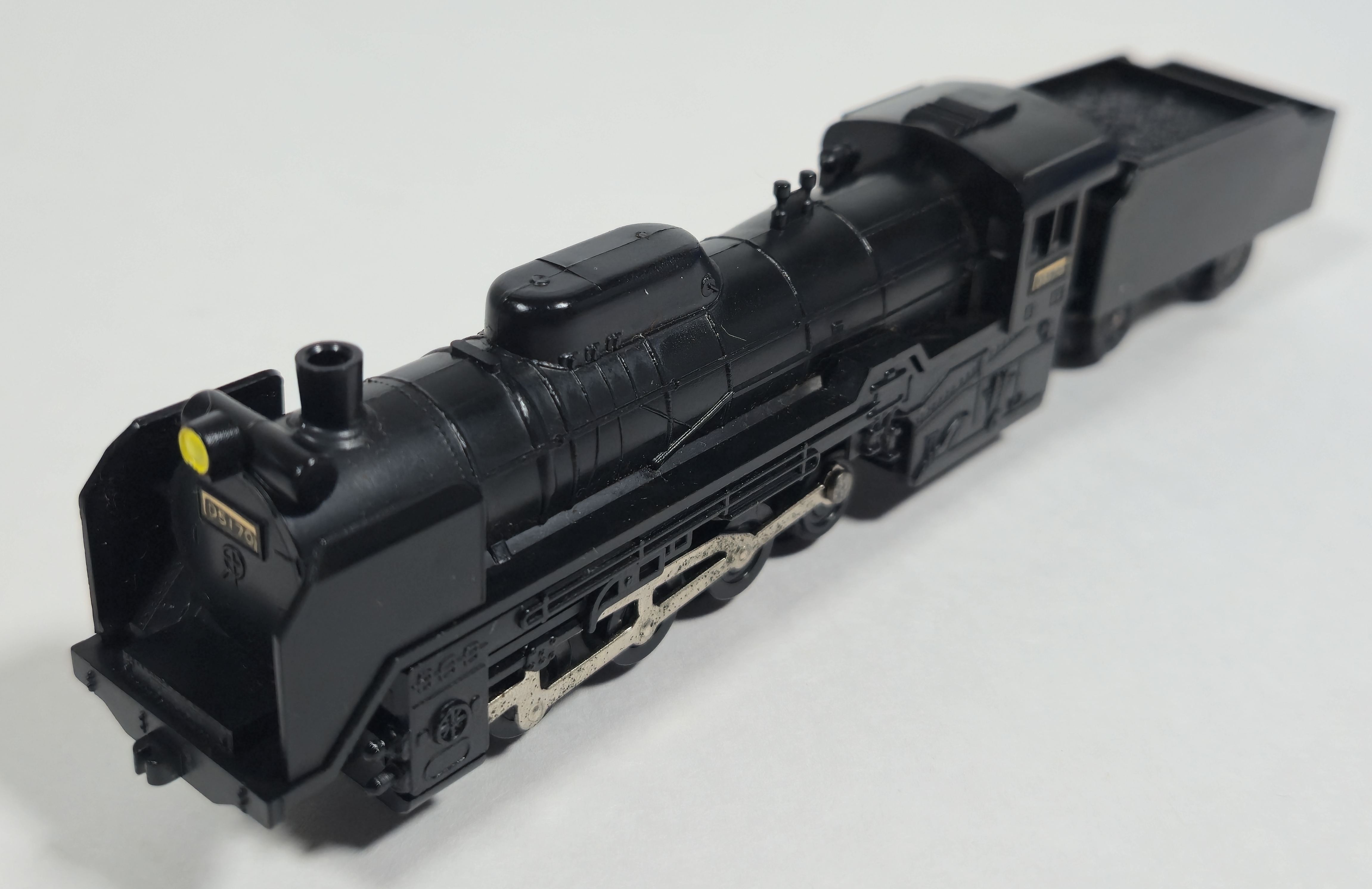
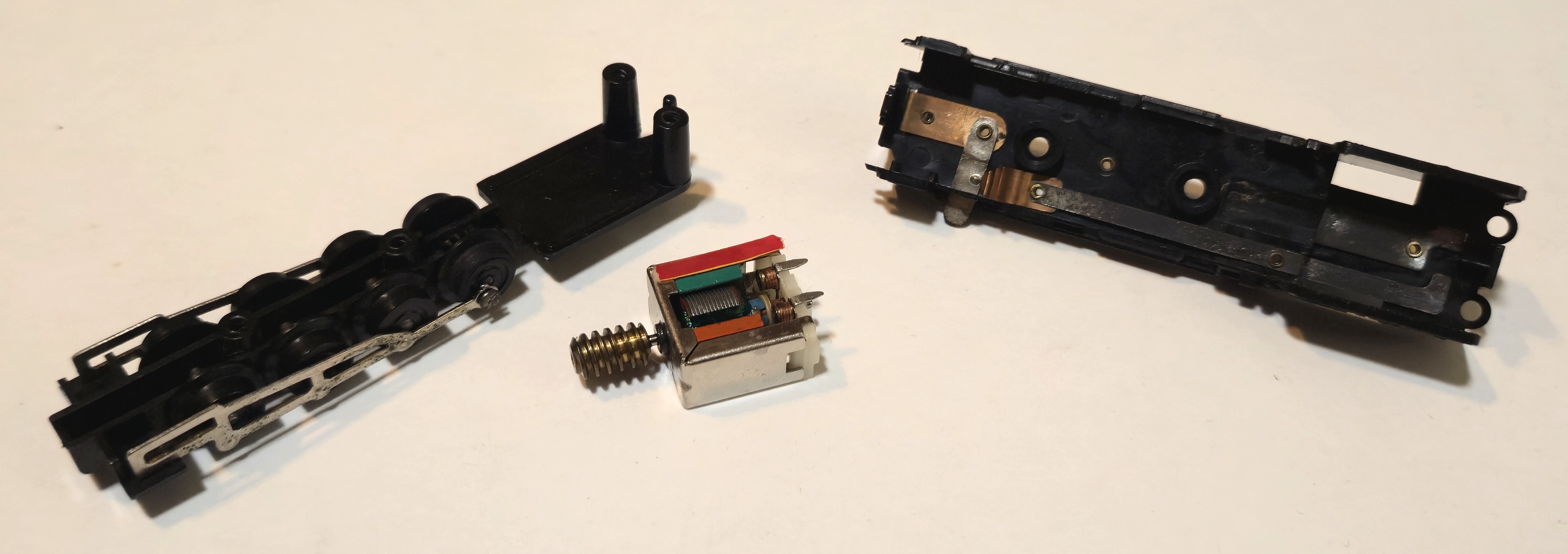
The original Mini Mini Rail steam locomotive, the D-51, used its own chassis with the same motor and worm drive system driving the rear wheels. The side rods are a stamped piece of metal and the other three pairs of wheels are unpowered.
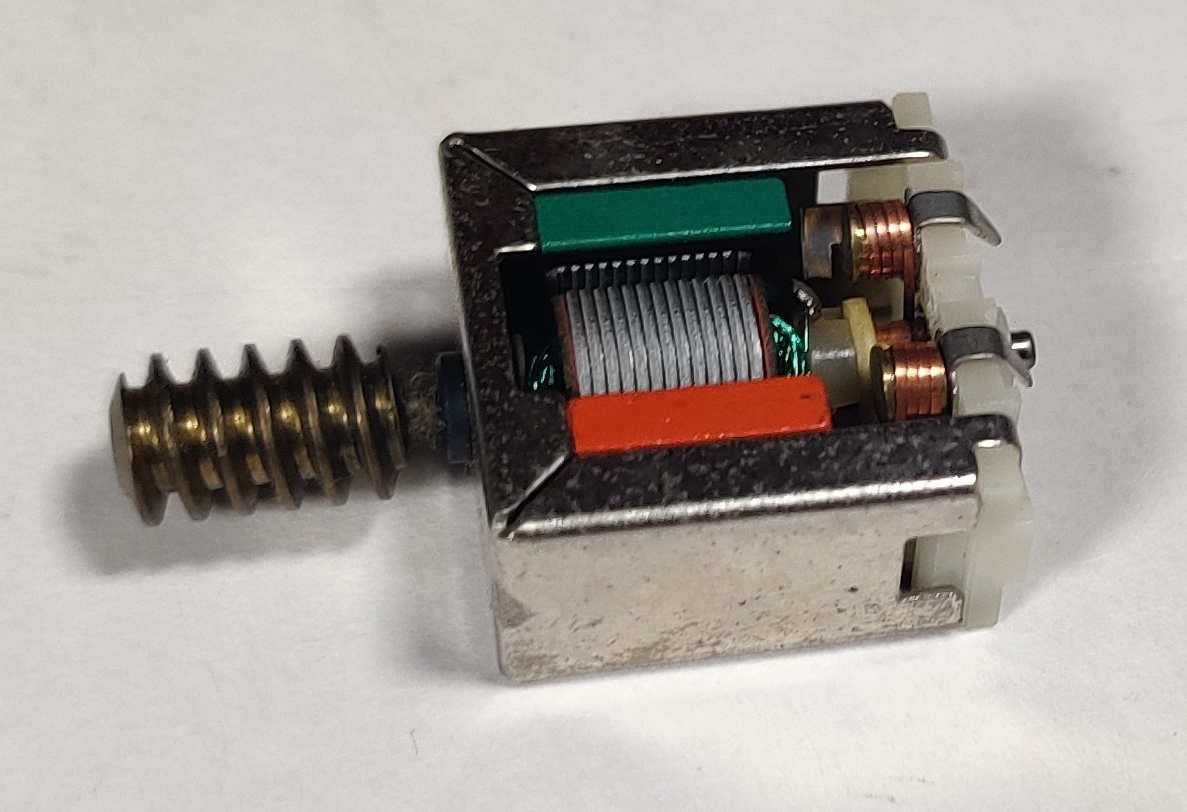
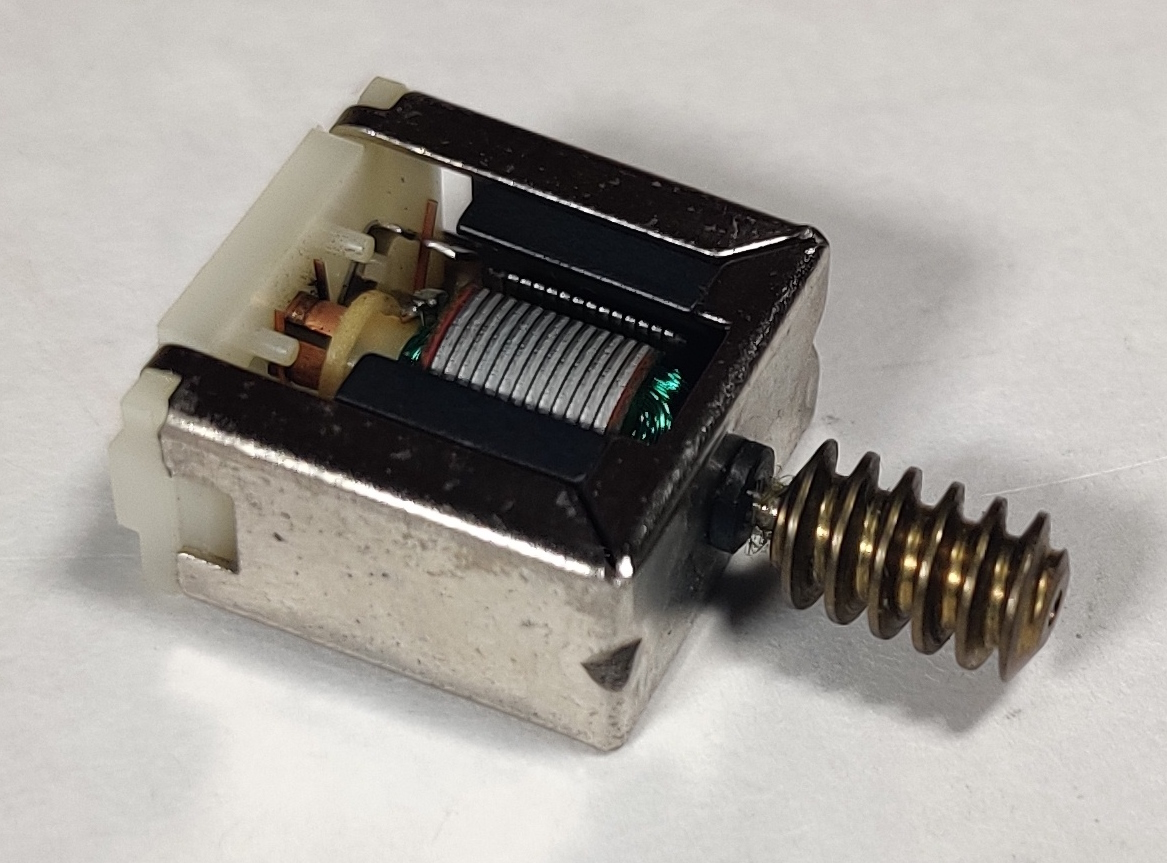
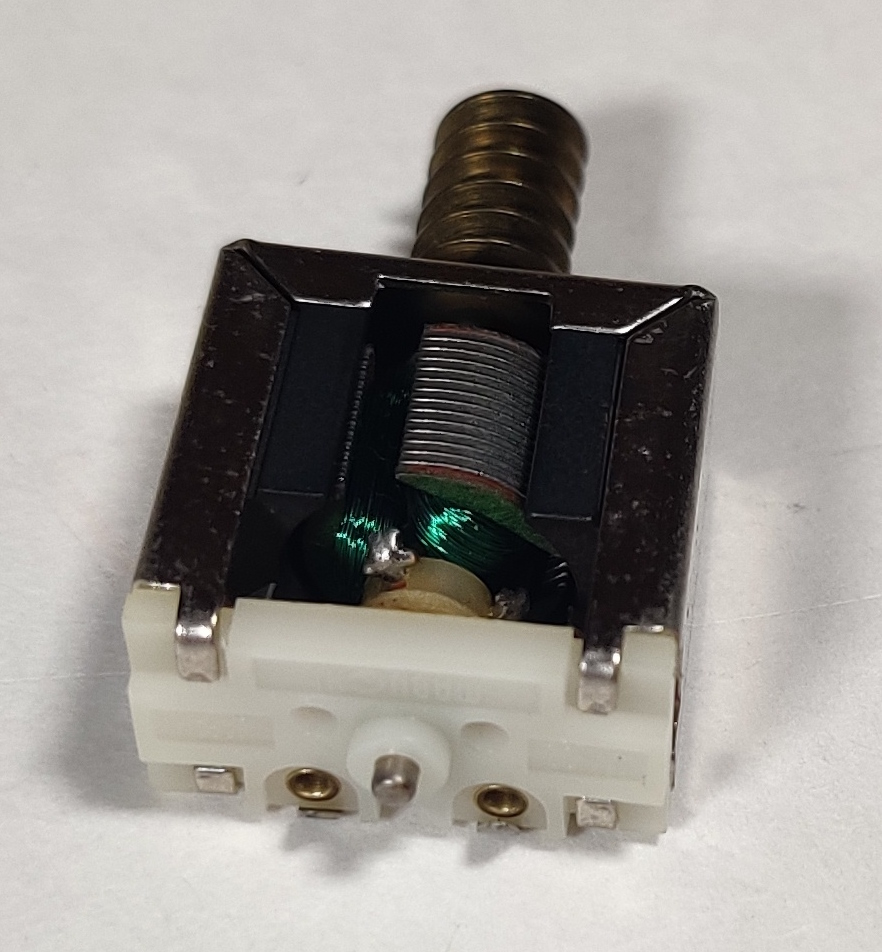
The first reversing Action Series chassis is fairly closely based on this design and both use a Mabuchi SM-02 open frame motor sandwiched against the power contact strips.
First Action Series Mini Mini Rail chassis (1976)
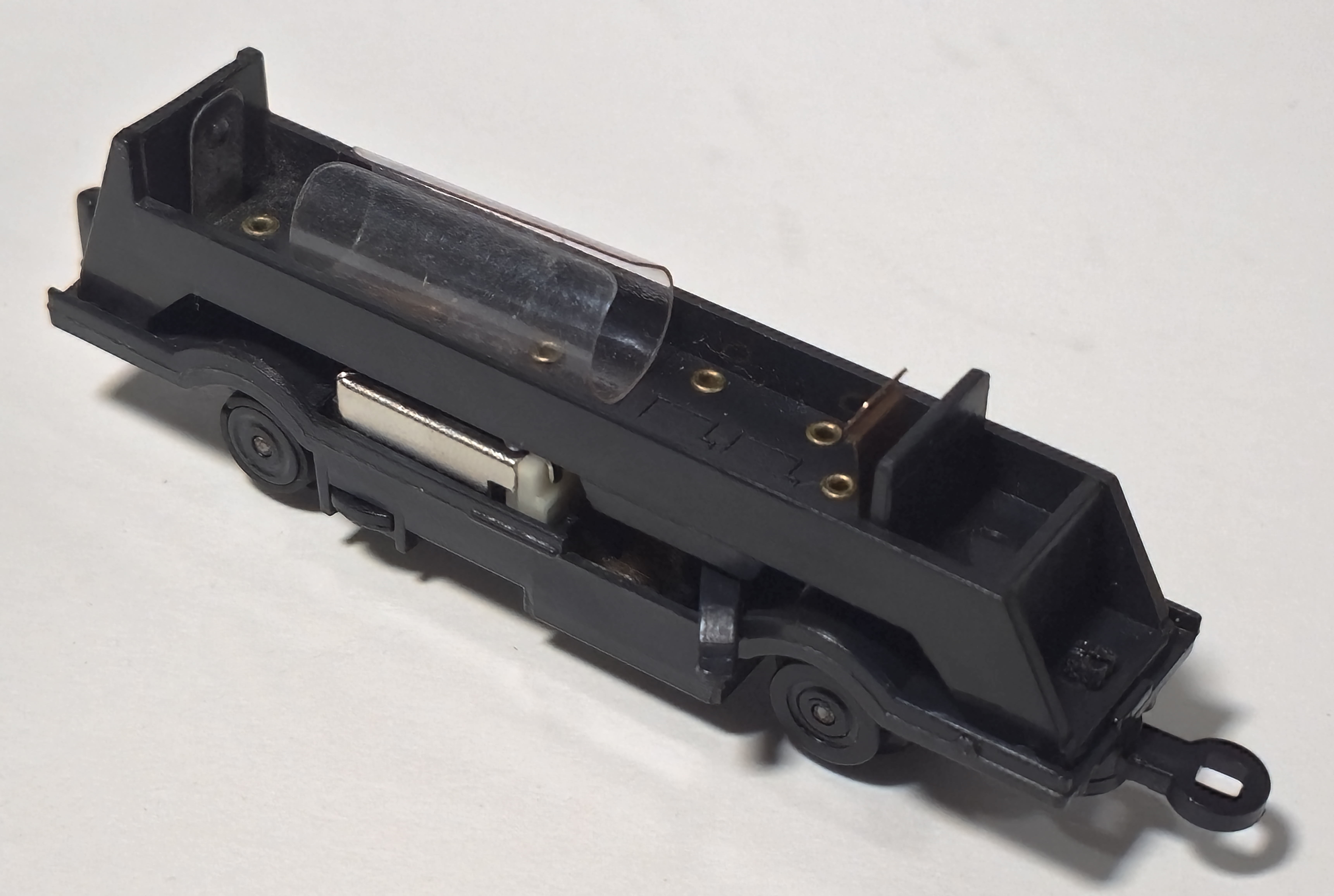
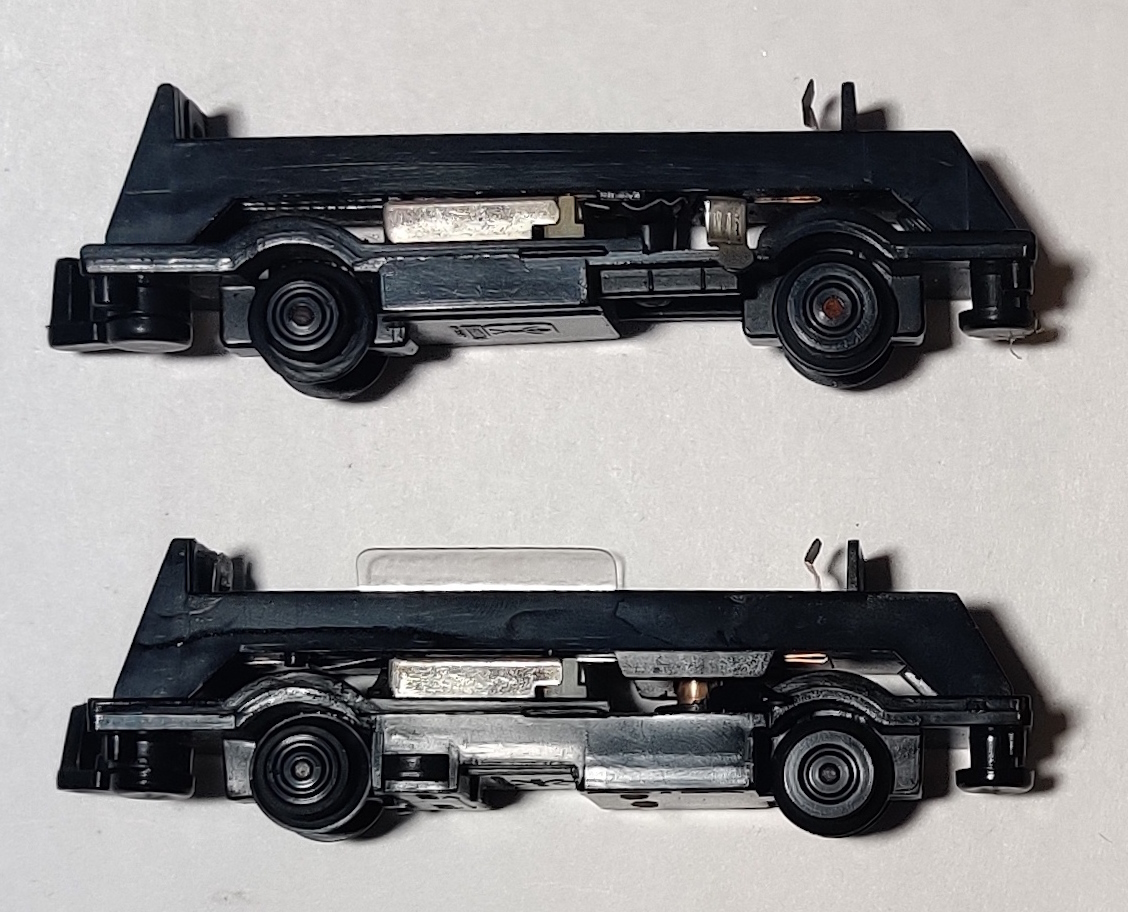
The first reversing Action Series chassis was based on the original style of chassis and has a mid-mounted Mabuchi motor. The reversing switch sticks out towards the front of the left side of the train or carriage like the power switch of the original trains. The circular coupling pegs and holes were changed to square couplers that hold the connection more steady and the coupled train more rigid when reversing.

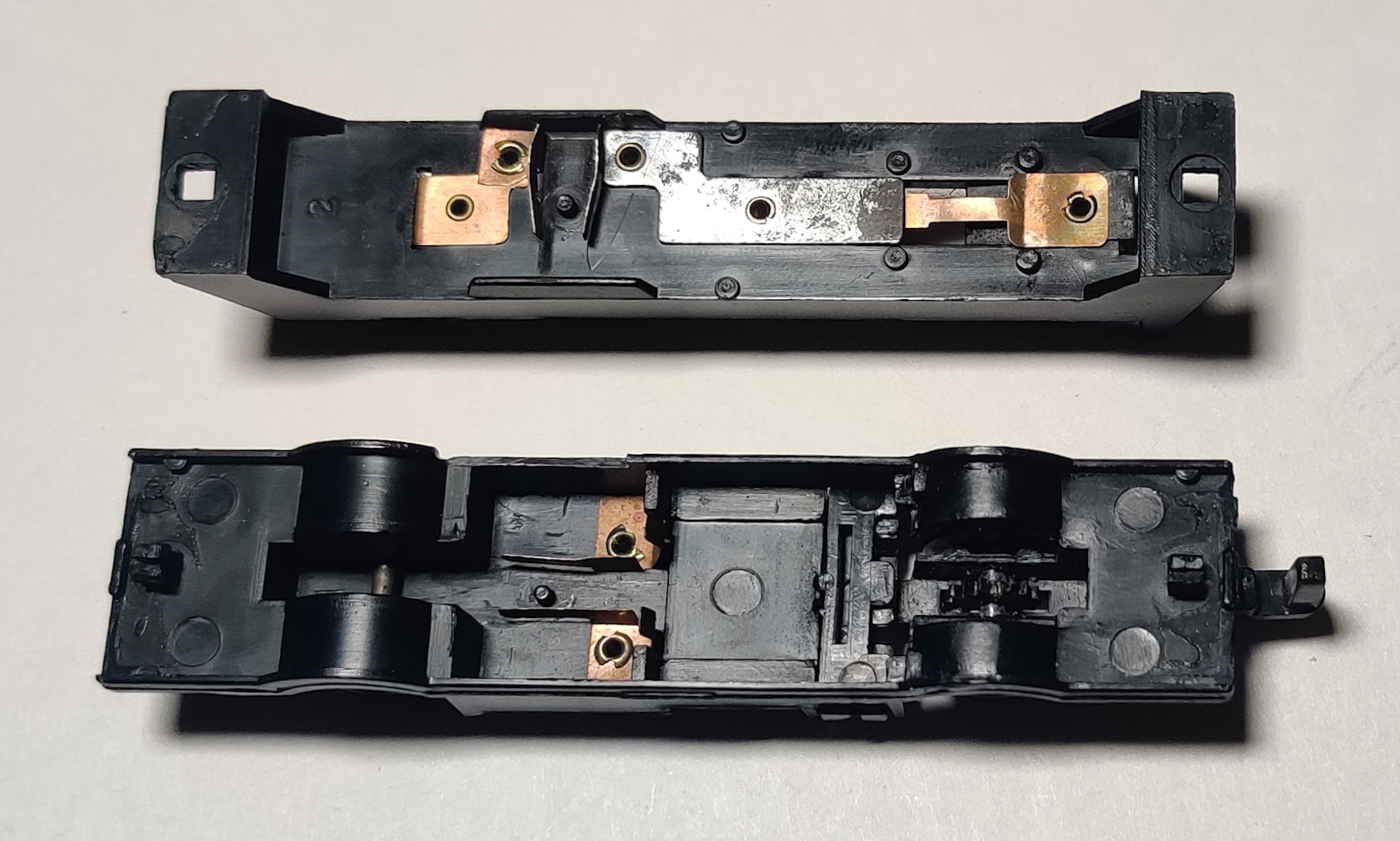
The power switch has been relocated to a sliding switch on the bottom near the rear wheels that interlocks with the stop-rail cutoff switch. The reversing switch is electrical and alternately connects different sides of the battery compartment with the motor contacts. It still takes two N size batteries.
Second Action Series Mini Mini Rail chassis (1978)
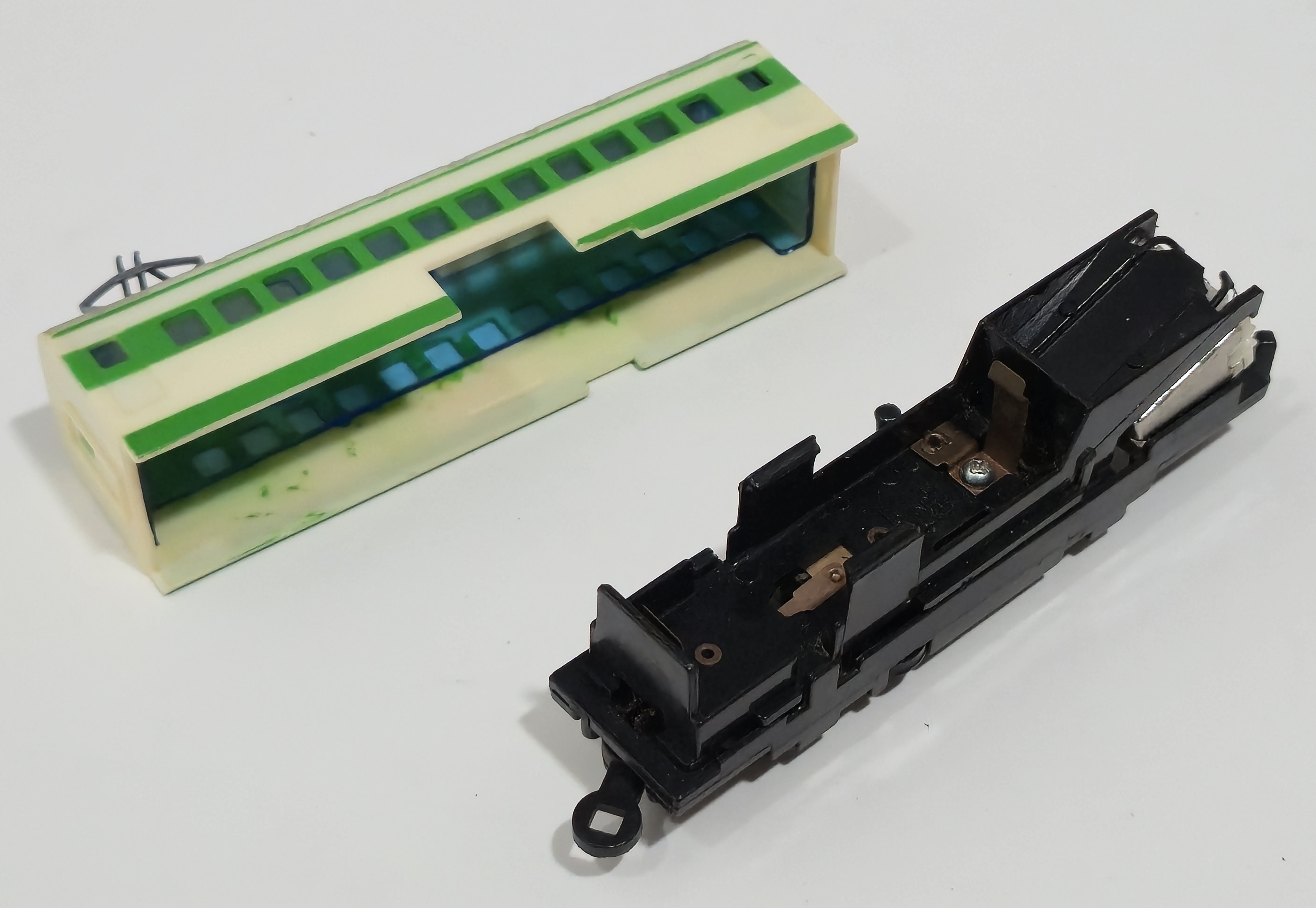
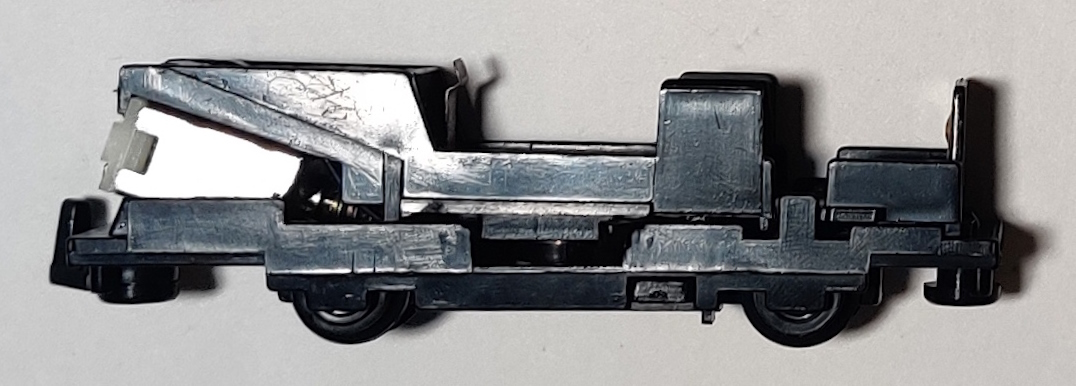
A new reversing chassis that used the more common AA battery was designed for the later Action Series that began around 1978 or so. This chassis was used for all later Mini Mini Rail trains through the end of the range in the 1980s. The reversing switch was moved to sit in the center of the chassis with the motor mounted at an angle at the rear, still driving the rear wheels via a worm gear. The power switch is now towards the front of the bottom of the chassis, and the wheels are much more shrouded by the chassis tooling, seemingly at least in part to replicate axleboxes.
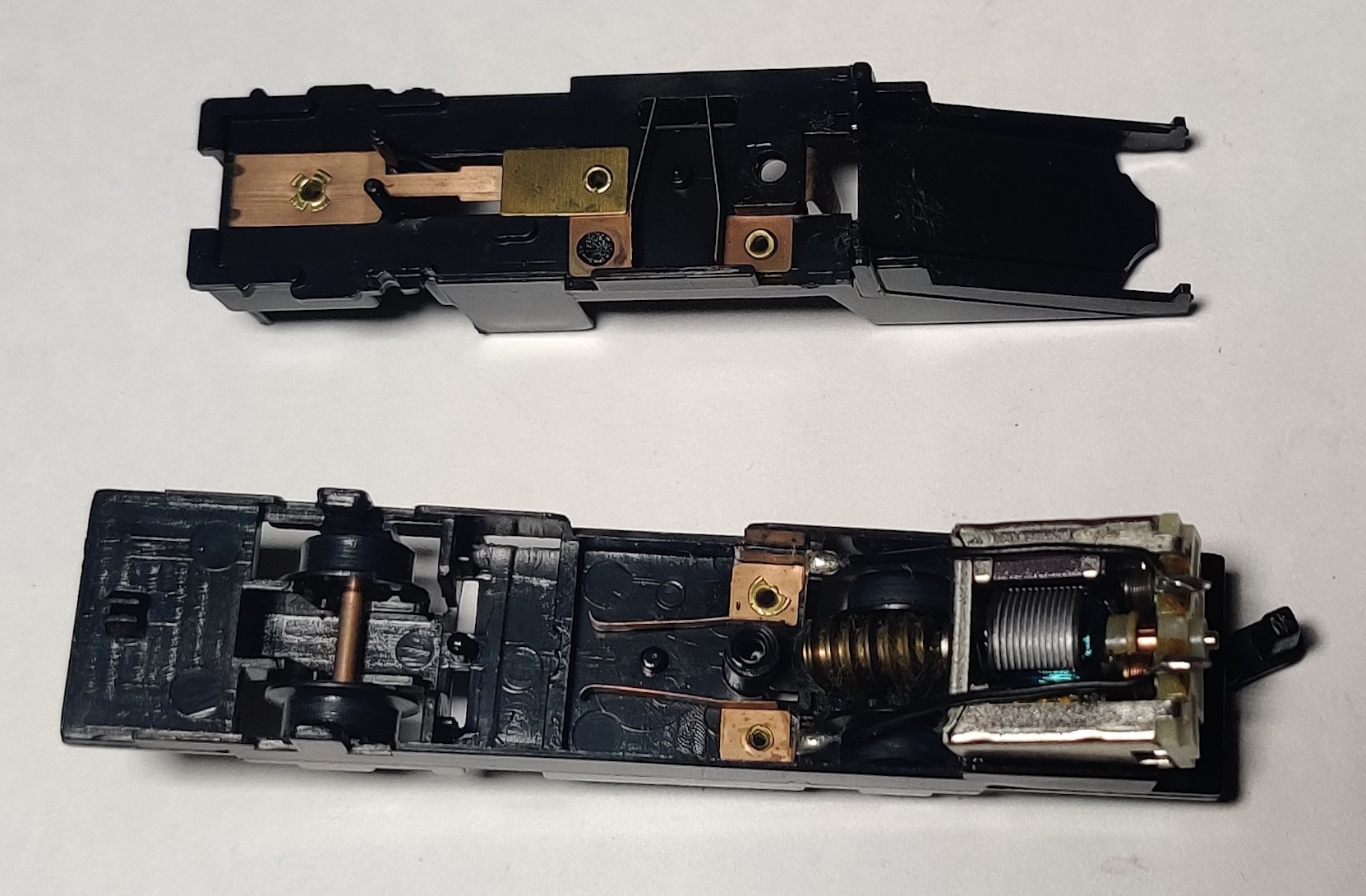
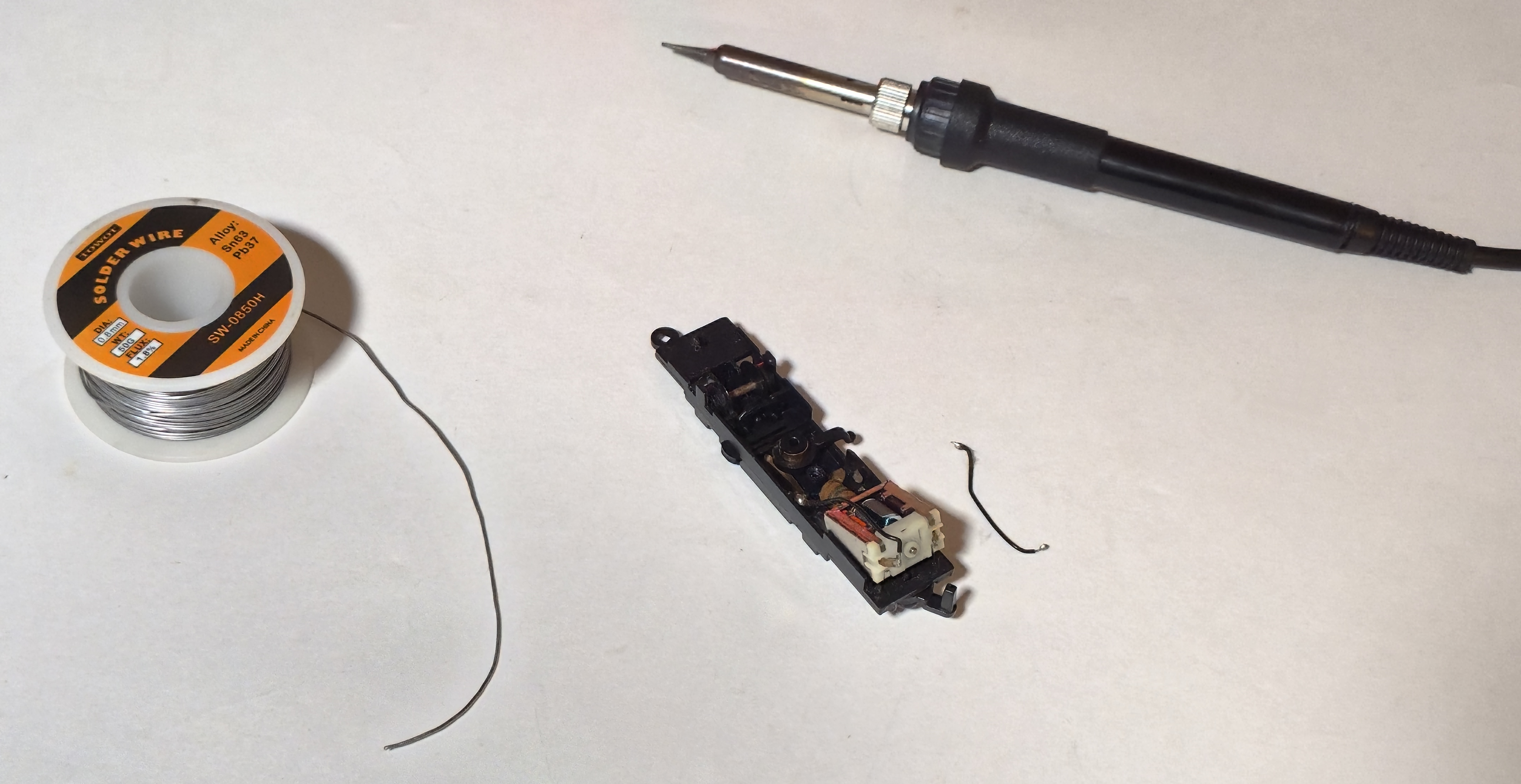
The electrical reverser and stop rail cutoff are similar to the previous chassis, with the motor now soldered to the bottom contact strips. Being at least 40 years old, these solder joints have sometimes failed.
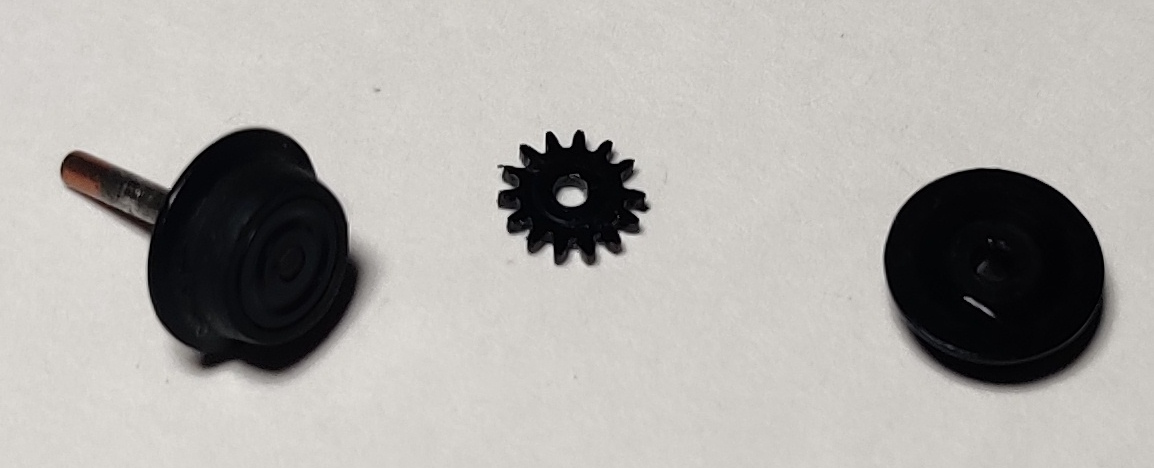
The rear driving gear also seems to split with age, spinning on the axle and making a wider gap in the teeth where the worm gear catches and stutters even if glued back together... I haven't looked for a direct replacement, but the tooth spacing seems wider to mesh with the worm gear. Perhaps with a nice 3D printer copies are feasible, but it might be easier for me to cast them. At this point I have a few working chassis of each type, so I can always swap them with non-operational ones as desired.
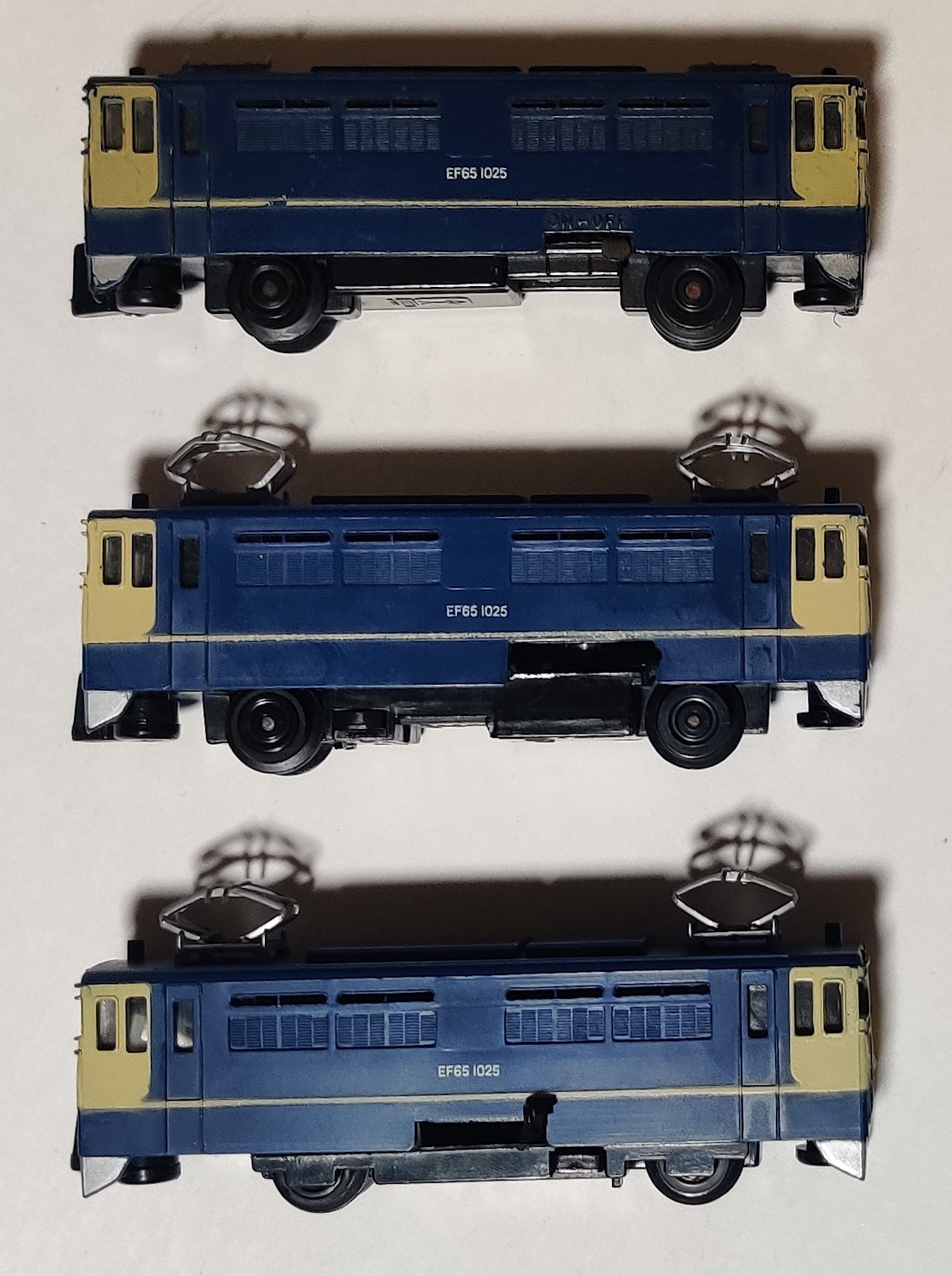 |
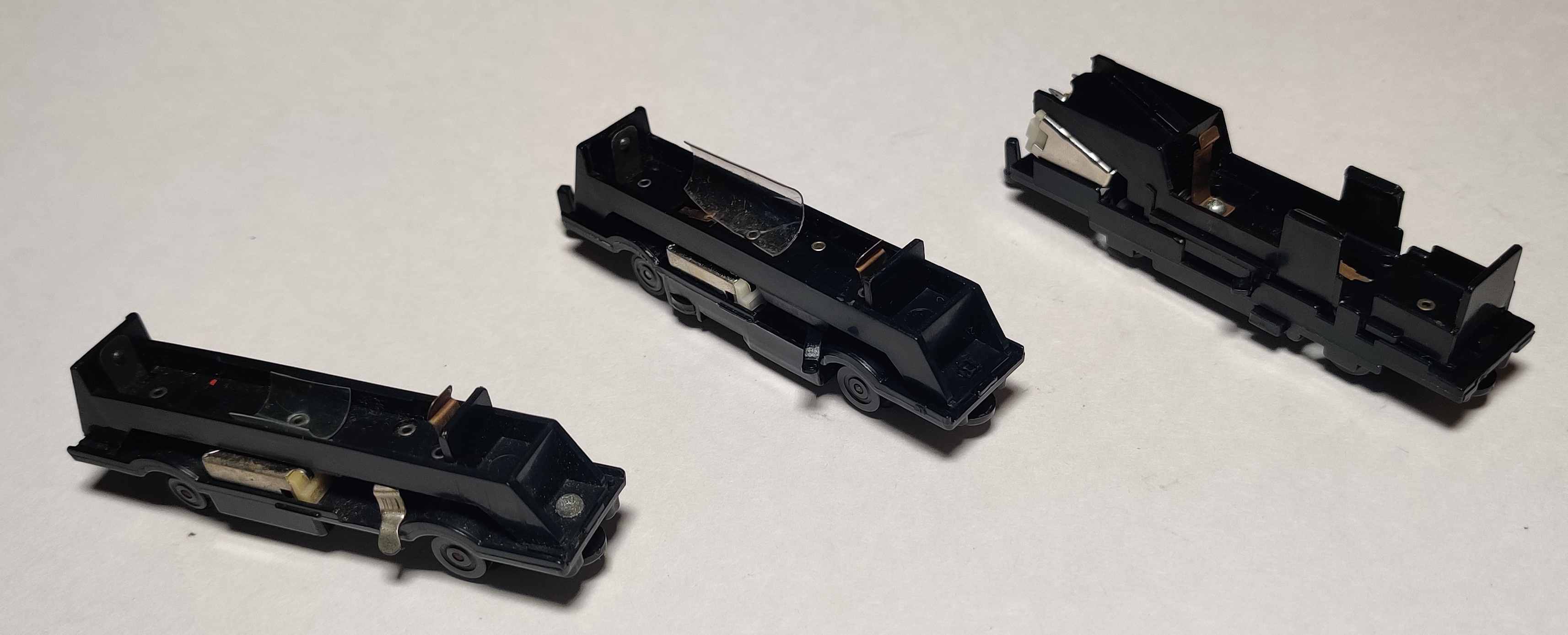 |
 |
Here are three EF-65s from each of these three different production types as well as their chassis' - note the often-broken plastic battery clips on the earlier two N battery types.